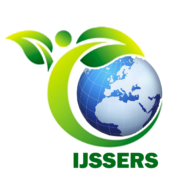This study aims to describe in depth related to (1) the characteristics of magical realism in Simple Miracels and Hundred Years of Silence, (2) The narrative structure of realism and magic in Simple Miracels and Hundred Years of Silence. This study aims to describe the characteristics of magical realism from the perspective of Wendy B Faris 1) Irreducible elements (irreducible elements that concern magical matters), 2) Phenomenal worlds (phenomenal worlds that prevent magical things from entering the fantasy world), 3) unsettling doubt (unresolved doubts that occur when co-opting text into irreducible elements), 4) merging realms (nature that mixes the magical and real things together), 5) and disruption of time, space, and identity (disruption or disruption of time, space and sacred identity to routine time, space and identity). (2) The narrative structure of realism and magic in Simple Miracles and One Hundred Years of Silence. The approach to this research is qualitative with descriptive research because the research is carried out by reading novels, sorting words, phrases, clauses, and sentences, and taking notes to produce data in the form of describing the storytelling style in the novel regarding the application of magical realism. The results of the study are that in the comparison of the characteristics of the two magical realism novels Simple Miracles by Ayu Utami and One Hundred Years of Solitude by Gabriel Garcia Marquez there are (1) differences in magical realism, (2) similarities in magical realism, and (3) the meaning conveyed from the two novels narrative characteristic of magical realism as a storytelling style. (1) The difference in magical realism that is lifted from the two novels offers a different nuance, if in the novel Simple Miracles by Ayu Utami, Javanese myths are often raised: ghosts, witchcraft, and haunted places, which are scary. If in the novel Hundred Years of Solitude by Gabriel Garcia Marquez, things are often discussed: the circus, ghosts that are not feared, and magicians. Daily life is so close to the tradition in Colombia as a representation of the Macondo people, that it is considered normal to mix magical things with real life, but not be amazed. (2) the similarity of magical realism presented in the two novels, the similarity in the novel Simple Miracles by Ayu Utami both raises magical realism in life and simultaneously reality and magic are present, such as ghosts appearing in public places, haunted places on public roads. If in the novel Hundred Years of Silence by Gabriel Garcia Marquez, the world of social reality appears, magical things side by side with us, that objects such as magnifying glasses appear among the public, even a person can fly in public at the same time, but is considered normal. (3) the interpretation of magical realism in the two novels Simple Miracles by Ayu Utami and Hundred Years of Silence by Gabriel Garcia Marquez, gives rise to something that the Western view cannot rationally merge into one with everyday life without letting go of reality being separated by magic. So magical realism in both novels serves as a storytelling style to convey the important points of the two hopes from the two writers from different countries. The conclusion in this study is that there is a comparison of the magical realism of the two novels Simple Miracles by Ayu Utami and One Hundred Years of Silence by Gabriel Garcia Marquez which are characterized by the magical realism characteristics of Wendy B Faris. Of the two novels in magical realism concerning; similarities, differences, and meanings of magical realism narratives in novels. So that magical realism as a storytelling style to convey behind the author’s interests.

